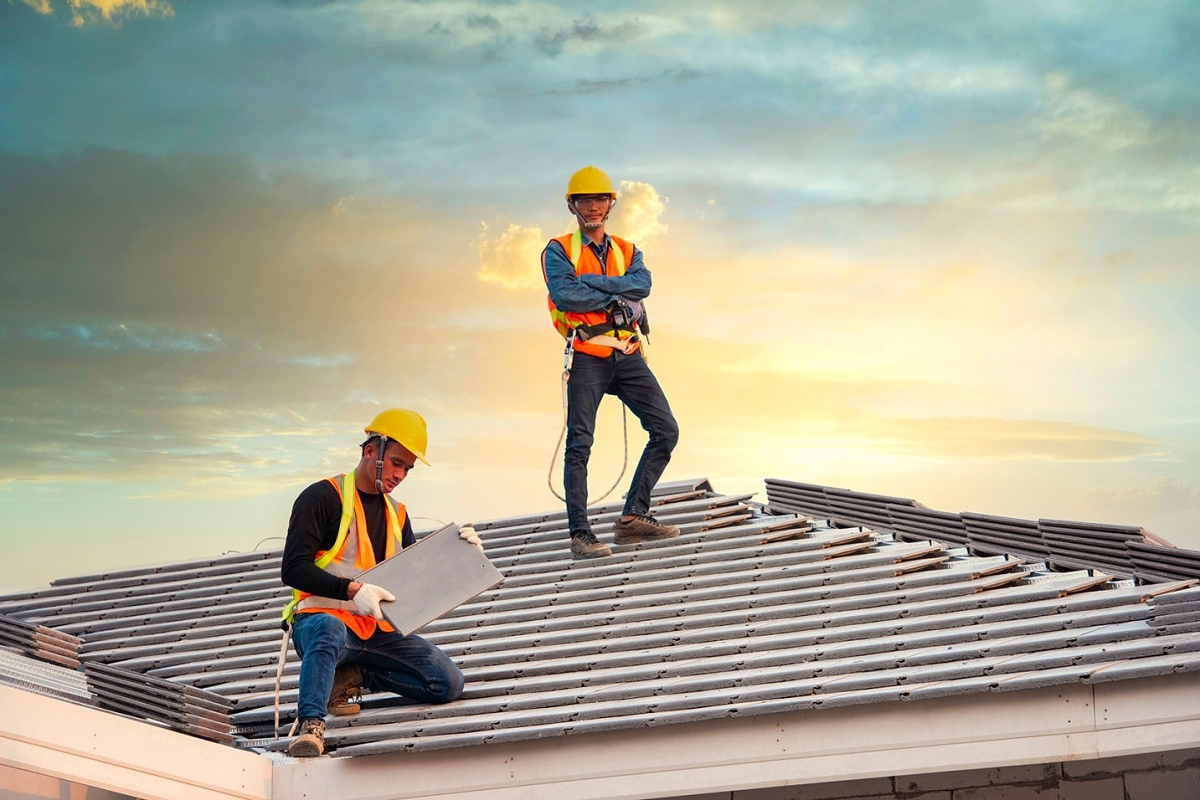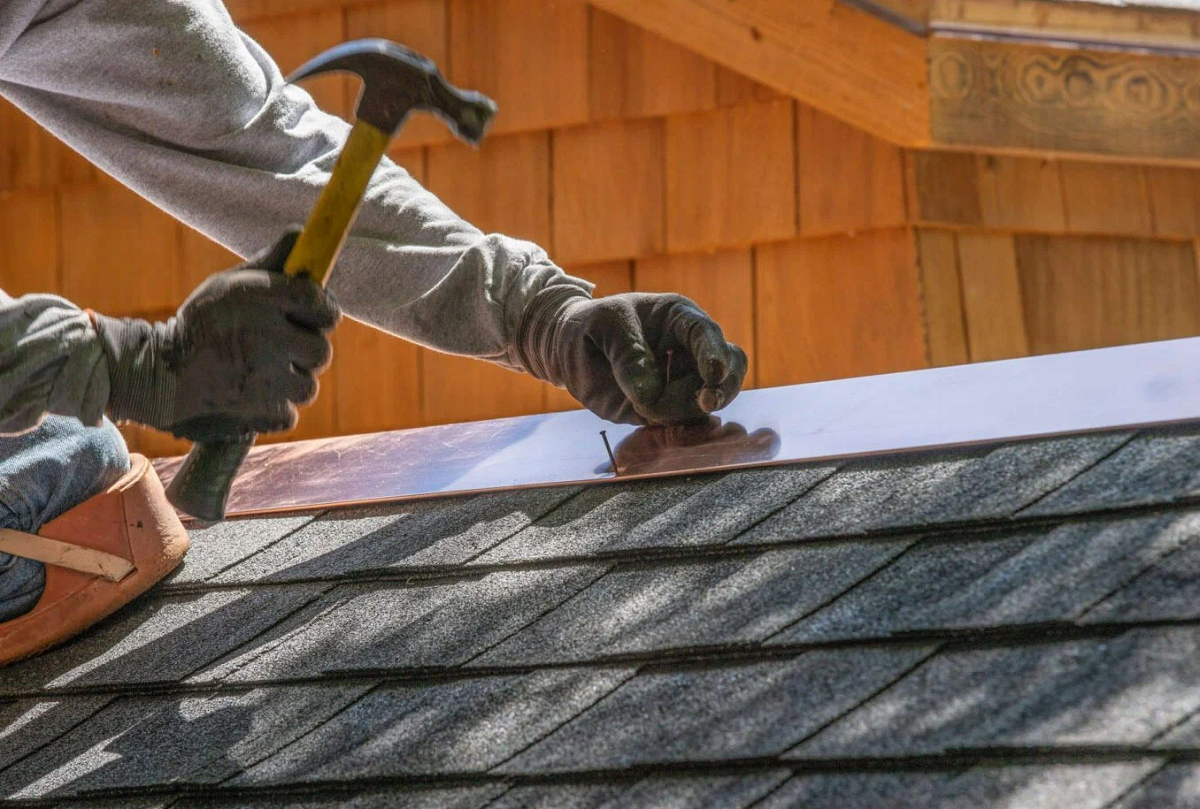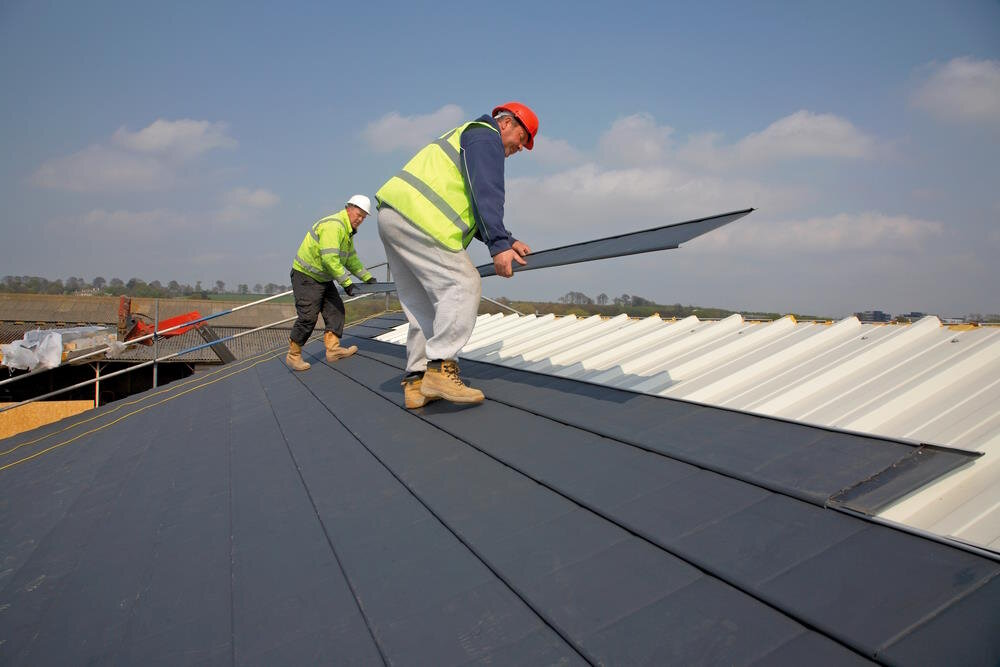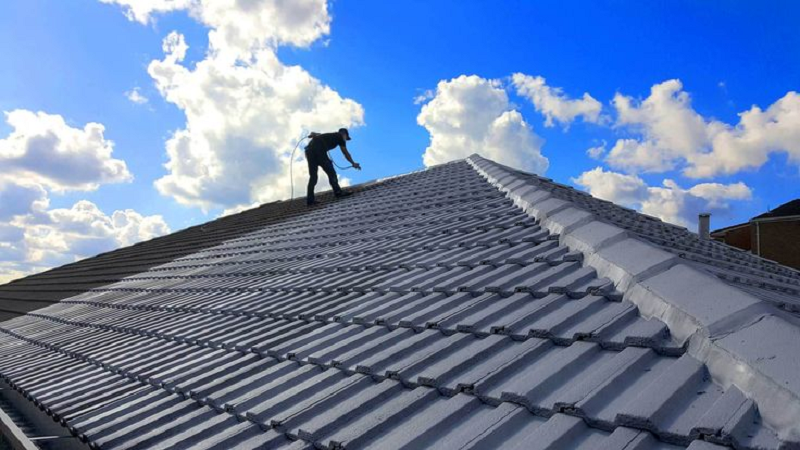CA. LIC#: 1075996
Maximizing Energy Efficiency with Roofing Materials
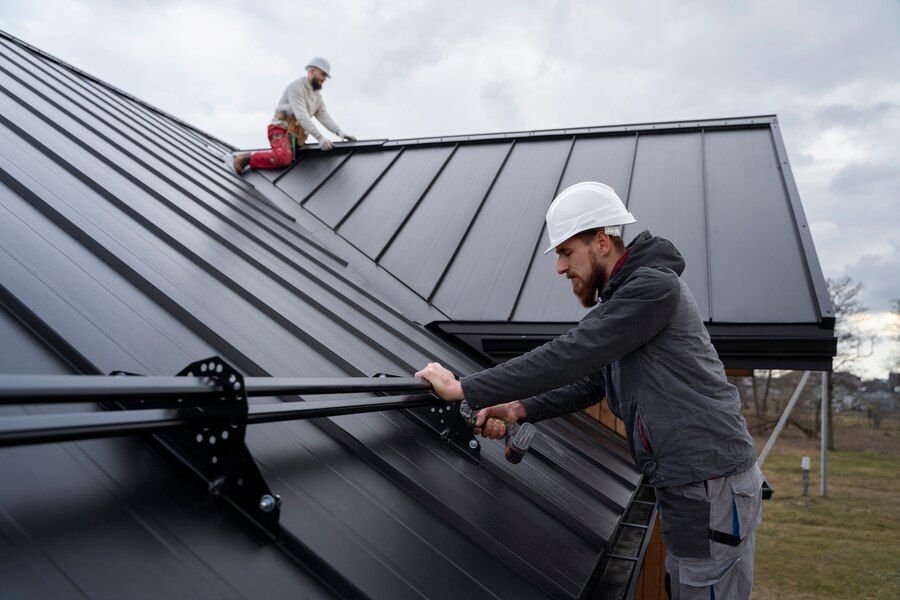
In the realm of sustainable living, every element of a structure plays a crucial role in minimizing energy consumption. Among these, roofing materials stand out as pivotal components in the quest for energy efficiency. The choice of roofing material holds significant sway over a building's ability to regulate internal temperatures, thus impacting overall energy usage.
From traditional asphalt shingles to innovative solar reflective tiles, the market offers a diverse array of options, each with its own set of advantages and considerations. Understanding the characteristics and performance metrics of different roofing materials is essential for homeowners and builders alike, as it enables informed decision-making towards maximizing energy efficiency. In this exploration, we delve into the realm of roofing materials, unraveling their potential in shaping sustainable structures and paving the way towards a greener future.
Understanding the Impact of Roofing Materials on Energy Consumption
The choice of roofing materials greatly impacts a building's energy usage and environmental impact. Materials like concrete or clay tiles, with high thermal mass, absorb and retain heat, potentially increasing indoor temperatures and cooling costs. In contrast, reflective materials like metal or white membranes lessen heat absorption, reducing cooling needs.
Factors such as insulation levels and roof color also influence energy efficiency. This understanding is vital for homeowners and builders seeking to maximize energy performance and lessen environmental consequences in both residential and commercial buildings.
Exploring Traditional Roofing Materials and Their Energy Efficiency
Exploring traditional roofing materials and their energy efficiency is essential for understanding the dynamics of sustainable construction. Traditional options have long been relied upon in building projects, but their energy performance varies widely.
- Asphalt shingles: Widely available but lower in reflectivity, potentially increasing cooling demands.
- Wood shakes: Natural insulation properties but may require additional treatments for longevity.
- Clay tiles: High thermal mass can increase indoor temperatures, especially in warmer climates.
- Metal roofing: Reflective properties reduce heat absorption, leading to lower cooling demands.
- Slate roofing: Durable and low-maintenance, with moderate thermal mass for energy efficiency.
Exploring traditional roofing materials reveals a nuanced landscape of energy efficiency considerations. By weighing the pros and cons of each option, individuals can make informed choices that align with their sustainability goals while meeting practical needs for shelter and protection.
Harnessing Solar Power: The Rise of Photovoltaic Roofing Solutions
PV roofing solutions revolutionize energy-efficient roofing by converting sunlight into electricity through integrated solar panels. With dual functionality as both protective covering and renewable energy generator, these systems are gaining popularity for residential and commercial use.
Advancements in solar technology and affordability make them an attractive option to reduce reliance on traditional power sources, lower energy costs, and mitigate carbon emissions. By harnessing solar power directly from the roof, property owners contribute to sustainability by offsetting energy consumption and potentially even generating surplus electricity for the grid, marking a significant step towards sustainable energy transition.
Cool Roofs: How Reflective Materials Combat Heat Gain
Cool roofs use reflective materials to minimize heat absorption, combating the urban heat island effect. These materials, often in light colors or with special coatings, bounce sunlight away from buildings, reducing thermal transfer and lowering cooling demands.
Beyond energy efficiency, cool roofs extend roof lifespan and enhance occupant comfort. As climate change and urban heat concerns rise, cool roofs gain momentum as a practical strategy to combat heat gain and reduce energy consumption in new construction and retrofits.
Insulation Integration: Enhancing Energy Efficiency with Roofing Systems
Insulation integration is a crucial aspect of enhancing energy efficiency within roofing systems. By effectively preventing heat transfer between the interior and exterior environments, insulation plays a key role in reducing heating and cooling loads, maintaining consistent indoor temperatures, and ultimately lowering energy bills.
- Improved thermal performance: Proper insulation minimizes heat loss in the winter and heat gain in the summer, leading to more comfortable indoor environments year-round.
- Reduced energy consumption: By minimizing heating and cooling loads, insulation integration helps lower energy bills and reduces the carbon footprint associated with building operations.
- Enhanced building durability: Insulation protects roofing materials from temperature fluctuations and moisture damage, extending the lifespan of the roof and reducing maintenance requirements.
- Compliance with energy codes: Incorporating insulation into roofing systems ensures compliance with energy efficiency standards and may qualify for incentives or rebates.
- Increased property value: Energy-efficient roofing systems with integrated insulation add value to properties by reducing operating costs and enhancing occupant comfort.
Insulation integration is a cost-effective strategy for enhancing energy efficiency and sustainability in roofing systems.
Green Roofing: Natural Solutions for Energy Conservation
Green roofing blends architecture and nature, with vegetation providing environmental benefits like energy conservation and insulation. These roofs mitigate urban heat island effects, absorb CO2, and lower carbon emissions.
Additionally, they aid in stormwater management, promote biodiversity, and enhance aesthetics, contributing to sustainable urban landscapes. As cities embrace green infrastructure, green roofing emerges as a compelling solution for energy conservation and ecological resilience.
Evaluating the Lifecycle Costs of Energy-Efficient Roofing Materials
While energy-efficient roofing materials may have higher upfront costs than conventional options, evaluating their lifecycle costs reveals their long-term economic benefits. Factors such as durability, maintenance requirements, energy savings, and potential incentives influence the overall cost-effectiveness of energy-efficient roofing solutions.
Although initial investments may be higher, lower energy bills and reduced maintenance expenses can result in significant savings over the lifespan of the roof. Additionally, government incentives, such as tax credits or rebates, can further offset the initial cost and accelerate the return on investment for energy-efficient roofing projects.
By considering both upfront expenses and long-term savings, property owners can make informed decisions that prioritize affordability without compromising energy efficiency or performance.
Maintenance Matters: Preserving Energy Efficiency in Roofing Structures
Maintaining energy efficiency in roofing structures is essential for maximizing their performance and longevity. Regular maintenance not only prevents energy loss but also preserves the integrity of the roofing system, ensuring it continues to contribute to energy conservation efforts.
- Inspections: Regular inspections allow for the early detection of potential issues such as leaks, damage, or deterioration, enabling timely intervention to maintain energy efficiency.
- Cleaning: Clearing debris, leaves, and other obstructions from the roof surface and gutters ensures proper drainage and prevents water buildup, which can compromise insulation and increase energy usage.
- Repairs: Addressing damaged or worn roofing materials, seals, and flashing promptly prevents energy loss and structural damage, preserving the efficiency and integrity of the roofing system.
- Seal Maintenance: Checking and maintaining seals around vents, skylights, and chimneys prevents air leakage, which can lead to energy waste and decreased indoor comfort.
- Reflective Surface Care: Keeping reflective roofing surfaces clean and free of debris maximizes their solar reflectance properties, reducing heat absorption and cooling demands for enhanced energy efficiency.
Proactive maintenance is paramount for preserving energy efficiency in roofing structures. By implementing a regular maintenance regimen that includes inspections, cleaning, and repairs, property owners can ensure their roofs remain efficient, functional, and sustainable for years to come.
Regulatory Considerations and Incentives for Energy-Efficient Roofing
Regulatory frameworks and incentives play a significant role in promoting the adoption of energy-efficient roofing practices and materials. Building codes often include provisions for energy performance standards, insulation requirements, and cool roof mandates to enhance energy efficiency and reduce environmental impact.
In addition to regulatory requirements, government incentives such as tax credits, grants, and rebates incentivize property owners to invest in energy-efficient roofing solutions.
These financial incentives not only lower the upfront cost barrier but also encourage sustainable building practices and contribute to broader energy conservation goals. Understanding and leveraging regulatory considerations and incentives is essential for maximizing the affordability and accessibility of energy-efficient roofing options, driving widespread adoption and positive environmental outcomes.
Future Trends: Innovations in Roofing Materials for Sustainable Building Practices
Innovations in roofing materials are driving sustainable building practices forward, offering solutions that prioritize energy efficiency, durability, and environmental responsibility.
- Bio-based materials: Plant-based polymers and recycled content offer renewable alternatives to traditional roofing materials, reducing reliance on finite resources and lowering carbon emissions.
- Advanced coatings: Specialized coatings and surface treatments enhance the reflective properties of roofing surfaces, reducing heat absorption and cooling demands while extending the lifespan of the roof.
- Smart building integration: Integration with smart building systems allows for real-time monitoring and optimization of energy performance, maximizing efficiency and occupant comfort.
- Modular roofing systems: Modular roofing systems offer versatility and efficiency in installation, allowing for easier transportation, reduced waste, and simplified maintenance.
- Solar roofing advancements: Advancements in solar technology are making solar roofing solutions more accessible and efficient, enabling buildings to generate their own renewable energy while providing protective roofing coverage.
As these trends continue to evolve, they hold the potential to transform the way we approach roofing in construction projects, leading to more sustainable and resilient buildings for generations to come.
The impact of roofing materials on energy consumption and environmental sustainability cannot be overstated. From traditional options to innovative solutions like photovoltaic and green roofs, each choice carries implications for energy efficiency, occupant comfort, and long-term sustainability.
As we navigate the complexities of modern construction, it's imperative to weigh the energy performance of roofing materials alongside other factors like cost, aesthetics, and regulatory requirements. By understanding the dynamics at play and embracing emerging trends in roofing innovation, we can make informed decisions that not only optimize energy efficiency but also contribute to a greener, more resilient built environment.
For those considering roofing projects, whether for new construction or renovations, Avalon Roofing Services (209) 380-1275 stands ready to assist. With a commitment to quality craftsmanship, customer satisfaction, and environmental stewardship, Avalon offers a range of roofing solutions tailored to meet your specific needs and sustainability goals.
Contact us today to learn more about how we can help you maximize energy efficiency and create a more sustainable future, one roof at a time.
We are a licensed roofing contractor in Manteca, CA specializing in residential and commercial roofing services. We service Manteca CA, Lathrop CA, French Camp CA, Modesto CA, Mountain House CA, Tracy CA, and other surrounding cities.
Quick Links
© 2023 Content, including images, displayed on this website is protected by copyright laws. Downloading, republication, retransmission or reproduction of content on this website is strictly prohibited.



